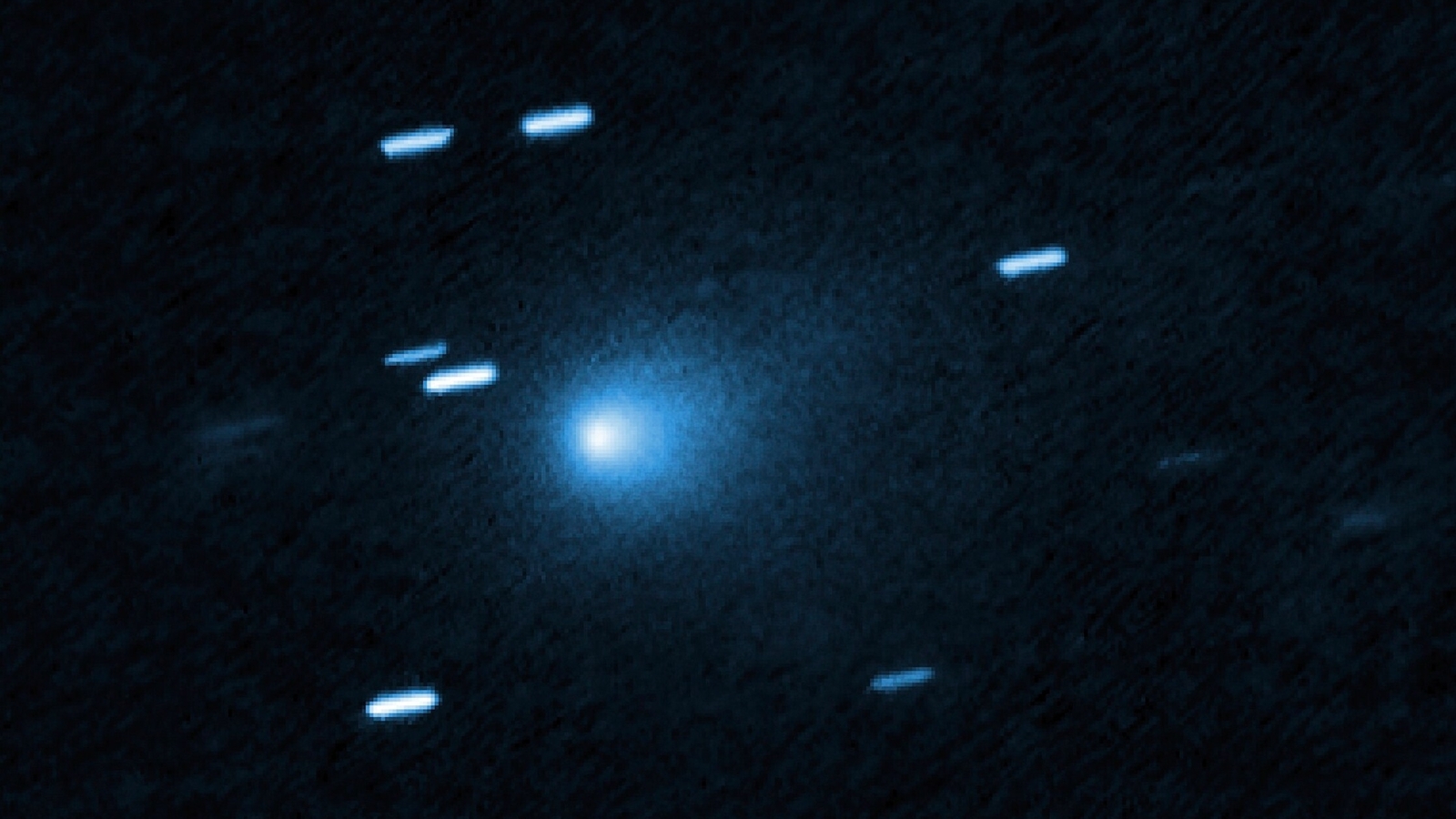Science
Scientists Investigate Comet 3I/ATLAS: Alien Spacecraft or Natural Phenomenon?

Scientists are closely monitoring the interstellar comet 3I/ATLAS as it reaches its closest approach to the Sun on October 29, 2023. This event, known as perihelion, occurred at 11:47 a.m. UT (7:47 a.m. Eastern Time). The scientific community is intrigued by the possibility that this object may be more than just a natural comet, raising questions about its origin.
The Hubble Space Telescope has captured detailed images of 3I/ATLAS, making it the third confirmed interstellar object to traverse our solar system, following the notable ‘Oumuamua in 2017 and 2I/Borisov in 2019. As the comet approaches the Sun, astronomers are observing its behavior closely, with many speculating whether it may possess characteristics indicative of alien technology.
Unusual Features Spark Debate
Among those analyzing 3I/ATLAS is Avi Loeb, a professor at Harvard University, who suggests that while the comet is likely natural, it displays eight unusual traits that distinguish it from typical comets. Loeb has assigned a score of 4 out of 10 on what he calls the Loeb Scale, where 0 signifies a definite natural object and 10 indicates an artificial origin.
Some of the comet’s peculiar characteristics include:
– An orbit closely aligned with the orbits of planets, which is highly unusual for comets.
– During July and August, 3I/ATLAS exhibited a sunward jet or “anti-tail,” which has been confirmed to be a genuine phenomenon and not an optical illusion.
– It is estimated to be one million times more massive than ‘Oumuamua and significantly larger than 2I/Borisov.
Loeb posits that if 3I/ATLAS is indeed a natural comet, the intense heat from the Sun could lead to its disintegration, potentially releasing a bright cloud of gas and dust. Conversely, if it is an artificial object, indications of advanced technology could include maneuverability, increased brightness, or the release of small probes.
Continued Observations and Implications
NASA has confirmed that 3I/ATLAS poses no threat to Earth, as it will maintain a safe distance during its passage by the Sun. Nevertheless, scientists will continue to study this interstellar visitor in the coming months to gain further insights into its nature and origin.
As Loeb remarked in an interview with Newsweek, “The possibility of alien technology would be huge, and we must take it seriously. Nature often surprises us more than any science fiction story ever could.” This ongoing investigation highlights the fine line between natural cosmic phenomena and the potential for extraterrestrial intelligence, igniting curiosity and excitement within both the scientific community and the public at large.
In summary, 3I/ATLAS is an extraordinary object that challenges our understanding of the universe. As scientists watch its path and characteristics, the implications of this comet will continue to unfold, providing a unique opportunity to explore the mysteries of our solar system and beyond.
-

 World5 months ago
World5 months agoSBI Announces QIP Floor Price at ₹811.05 Per Share
-

 Lifestyle5 months ago
Lifestyle5 months agoCept Unveils ₹3.1 Crore Urban Mobility Plan for Sustainable Growth
-

 Science4 months ago
Science4 months agoNew Blood Group Discovered in South Indian Woman at Rotary Centre
-

 World5 months ago
World5 months agoTorrential Rains Cause Flash Flooding in New York and New Jersey
-

 Top Stories5 months ago
Top Stories5 months agoKonkani Cultural Organisation to Host Pearl Jubilee in Abu Dhabi
-

 Sports4 months ago
Sports4 months agoBroad Advocates for Bowling Change Ahead of Final Test Against India
-

 Science5 months ago
Science5 months agoNothing Headphone 1 Review: A Bold Contender in Audio Design
-

 Top Stories5 months ago
Top Stories5 months agoAir India Crash Investigation Highlights Boeing Fuel Switch Concerns
-

 Business5 months ago
Business5 months agoIndian Stock Market Rebounds: Sensex and Nifty Rise After Four-Day Decline
-

 Sports4 months ago
Sports4 months agoCristian Totti Retires at 19: Pressure of Fame Takes Toll
-

 Politics5 months ago
Politics5 months agoAbandoned Doberman Finds New Home After Journey to Prague
-

 Top Stories5 months ago
Top Stories5 months agoPatna Bank Manager Abhishek Varun Found Dead in Well









